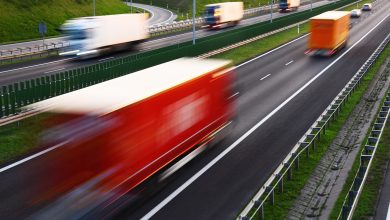France, number one in taxation, accounts for 35% of agricultural production taxes in Europe. French farmers receive just 14% of subsidies, despite accounting for 18% of production
Paris, July 10, 2024 – The Institut Economique Molinari is releasing an original study that compares agricultural subsidies and production taxes in France against the other countries of the European Union (EU). Counter to the conventional wisdom, it reveals that French farmers do not receive any more aid than their European counterparts, not least because they have to pay abnormally high production tax.
France: 35% of production taxes versus 14% of after-tax farm subsidies
- The study shows that farmers receive 14% of agricultural subsidies net of taxes in the European Union, which is less than their share of agricultural production (18%).
- French farmers receive 15% of subsidies and aid distributed in the EU before tax, slightly below their share of EU agricultural production (18%).
- These same farmers account for 35% of taxes on agricultural production in the EU, double the market share of French agriculture (18%).
France, with the highest taxation, is in the bottom quartile of European countries for agricultural aid
- The EU averaged 8 cents of tax against every €1 of agricultural subsidy in 2022; in France, the same measure reached 18 cents, the highest in the union.
- When we ignore taxation (gross perspective), we see 11 cents of subsidy per €1 of agricultural production in France in 2022. Support for farmers was thus lower than the average for EU countries (13 cents of subsidy per €1 of production).
- When taxes are accounted for (net perspective), we see 9 cents of subsidy and aid per €1 of agricultural production in France, as compared with an average of 12 cents in the EU and 40 cents in Finland. Far from the cliché of French farming being the CAP’s big winner, in reality France is in the bottom quartile of European countries in terms of agricultural support.
In France, taxation of production remains an issue for agriculture as it is for all other sectors.
Production taxes continue to penalise French agriculture, as they do other economic sectors. The present study shows that in 2022 production taxes in the Hexagon remained too high with respect to the rest of the EU.
Agriculture, like real estate, suffers under production taxes that are twice as high. France will account for 35% of the EU’s 2022 tax burden on agricultural production, but for only 18% of actual production, a ratio of 2 to 1. While agriculture is less penalised than other French sectors—notably industrial production, which accounts for 47% of the EU’s tax burden while enjoying a market share of only 12% (a ratio of 4 to 1)—its situation is nonetheless critical. Agriculture is particularly exposed, both to the vagaries of the weather and to production taxes. Unlike taxes on profits, production taxes do not vary according to results. This represents a formidable added handicap.
European support for agriculture is comparable to the rest of the OECD countries
When overall public support is analysed by taking into account budgetary support for producers and consumers, the EU’s agricultural policy is very slightly less developed than in the OECD. Budgetary support represents 17% of the value of production, compared with an OECD average of 18%. The United States outdoes Europe by a significant margin, with budgetary support representing 25% of production.
Only by focusing solely on producer support—calculated by aggregating subsidies and gains linked to agricultural price support mechanisms—can we make the data show that the EU helps its farmers more than in the OECD. Producer supports account for 15% of farmers’ income in the EU, compared with 13% in the OECD overall. This is lower than in certain neighbouring countries (Norway, Switzerland), and in line with the UK, but significantly higher than in the United States (7%).
RESOURCES
The study, entitled “The myth of subsidized French agriculture as a big winner under the CAP,” is based on Eurostat data which enables comparisons to be made between all European countries. It also uses data from the OECD. It is available on our website: https://www.institutmolinari.org/wp-content/uploads/2024/07/etude-agriculture-2024.pdf
The three figures and the data in this press release are available in Datawrapper format:
In France, fewer subsidies and more production taxes on agriculture (2022): https://www.datawrapper.de/_/GevUt/
France, the leader in production taxes that erode the impact of farm subsidies: https://www.datawrapper.de/_/oFqJu/
Gross and net subsidies per €1 of agricultural production (2022): https://www.datawrapper.de/_/Psr49/
QUOTES
Nicolas Marques, Director General of the Institut Economique Molinari (IEM) and study author.
“A lot of people think that French farmers are particularly well served, with a generous CAP complemented by extensive national support.
“But European statistics show that support for agriculture is lower than in the average European country. This is mainly because France taxes agricultural activity much more and suffers under excessive production taxes in comparison with neighbouring countries.
“French agriculture—like other sectors of activity, and industry in particular—would benefit from a massive reduction in production taxes. This would involve a complete overhaul of funding by local authorities, which should be financed by a combination of corporate tax and VAT instead of creating deleterious economic effects by making their funding dependent on taxing the means of production.”
Cécile Philippe, President of the Institut Économique Molinari (IEM).
“The beginning of 2024 was marked by a very strong mobilisation of the farming community. Furious farmers voiced their exasperation in the face of shrinking incomes and increasing restrictions. Yet again, the tax issue was at the heart of the discussion, with no clear-cut solution in sight. Because if there is one sector that receives support in France and Europe, it is agriculture, thanks to the famous Common Agricultural Policy. According to some, this generosity makes it possible to introduce more stringent environmental regulations.
“Analysis of farm finances shows that this is not the case. French farmers receive less aid than most of their European competitors, because the French public authorities are experts at clawing back what they give.
Ultimately, the figures show that reducing the tax and regulatory burden on agriculture makes sense.”
ABOUT THE INSTITUT ÉCONOMIQUE MOLINARI
The study was written by Nicolas Marques of the Institut économique Molinari (IEM).
The Institut économique Molinari (Paris and Brussels) is an independent research and education organisation. It seeks to stimulate the economic approach in the analysis of public policy, offering innovative alternative solutions that favour the prosperity of all individuals making up society.
FOR INFORMATION OR INTERVIEWS, PLEASE CONTACT THE AUTHORS
Nicolas Marques, General manager of the Institut économique Molinari (Paris, French),
nicolas@institutmolinari.org, +33 6 64 94 80 61
Cécile Philippe, President of the Institut économique Molinari (Paris, French or English), cecile@institutmolinari.org, +33 6 78 86 98 58





